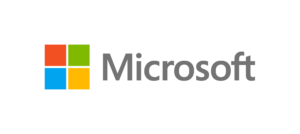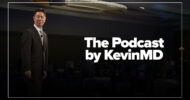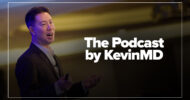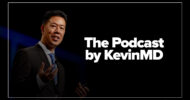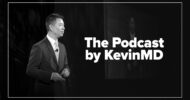Subscribe to The Podcast by KevinMD. Watch on YouTube. Catch up on old episodes!
Physician executive Sreeram Mullankandy discusses his article, “Bridging the digital divide: Addressing health inequities through home-based AI solutions.” The conversation highlights that while the future of health care delivery is moving into patients’ homes, this shift risks leaving the most vulnerable populations behind. Sreeram explains that non-medical factors, or Social Determinants of Health (SDOH), can influence up to 80 percent of health outcomes but are often missed by traditional systems. He argues that artificial intelligence, when deployed thoughtfully, can be a powerful equity enabler. The discussion covers how AI can identify hidden SDOH patterns with high accuracy, bridge language and literacy barriers for the nearly 36 million U.S. adults who need it, and serve as a force multiplier for community health workers. Sreeram also addresses the critical need for fairness audits to prevent AI from perpetuating bias and the massive economic incentive for building a more just system, which could save $1.7 trillion in health care costs.
Our presenting sponsor is Microsoft Dragon Copilot.
Want to streamline your clinical documentation and take advantage of customizations that put you in control? What about the ability to surface information right at the point of care or automate tasks with just a click? Now, you can.
Microsoft Dragon Copilot, your AI assistant for clinical workflow, is transforming how clinicians work. Offering an extensible AI workspace and a single, integrated platform, Dragon Copilot can help you unlock new levels of efficiency. Plus, it’s backed by a proven track record and decades of clinical expertise and it’s part of Microsoft Cloud for Healthcare–and it’s built on a foundation of trust.
Ease your administrative burdens and stay focused on what matters most with Dragon Copilot, your AI assistant for clinical workflow.
VISIT SPONSOR → https://aka.ms/kevinmd
SUBSCRIBE TO THE PODCAST → https://www.kevinmd.com/podcast
RECOMMENDED BY KEVINMD → https://www.kevinmd.com/recommended
Transcript
Kevin Pho: Hi, and welcome to the show. Subscribe at KevinMD.com/podcast. Today we welcome Sreeram Mullankandy. He is a physician executive. Today’s KevinMD article is “Bridging the digital divide: Addressing health inequities through home-based AI solutions.” Sreeram, welcome to the show.
Sreeram Mullankandy: Thank you so much, Kevin. Thanks for having me. People call me Sri. Feel free to call me Sri. I am very excited about getting to speak about my article and other things.
Kevin Pho: Alright, fantastic. So just tell us a little bit about your story and journey and then what led you to write this article at KevinMD.
Sreeram Mullankandy: Definitely. I’ll start with a quick background about myself. I’m a medical doctor from India. Then I taught in the same medical school for about a year. Then I moved into the corporate side. I did my MBA from Boston University in health sector management and entrepreneurship. I handled product roles in multiple companies, for example, B-K Medical, DaVita, Humana, recently in biopharma, a health tech unicorn, and now I’m with a company called Illumina Health, which is a new company and we are building an electronic health record specifically for home-based health care or home health care with AI capabilities. Apart from that, I also am a judge and mentor for multiple startup accelerators in the health tech world: MassChallenge, Techstars, MIT Launch, et cetera. Recently, as you rightly pointed out, I got an opportunity to write an article for your platform as well. Thank you for that opportunity, and I would like to speak to you more about it.
Kevin Pho: So tell us about the article for those who didn’t get a chance to read it.
Sreeram Mullankandy: In this new age of AI, one of the things that struck me when I joined this new company and started building an EHR, right, when I first ventured into health tech, I would say maybe seven or eight years ago, at that time, things were quite difficult. These days, because of the advent of AI, a lot of things have become much easier. Once I started moving into home-based health care, initially, my focus, because I’m a clinician with that background, was a very narrow focus or tunnel vision around what I can do for the patient’s ailment or how to focus entirely on the patient. We have especially focused on improving clinical outcomes. I did some research, and we were also trying to improve our outcomes, and we faced some roadblocks despite the best efforts, so to speak. Then I did some research and found out that only 20 percent of health outcomes are directly related to the clinical care that you provide.
Eighty percent of it is actually related to SDOH: social determinants of health. I somehow knew about it at a high level but did not focus too much on it until a few years ago. So that was a revelation for me, and then I started thinking about what are the different things that we can do to intervene in that area. Also, even if you’re a clinician and even if you’re a health care organization, to give you a quick summary for the viewers and listeners: social determinants of health are a broad set of other factors that come into the picture that are not entirely clinical care.
For example, they are primarily categorized into three categories: food security, home security, and also transportation. There are multiple, obviously; those are the three broad categories. But it was surprising to me when I first figured out that 80 percent of the health care outcomes are related to those three areas and the factors that affect them. So we started intervening or tried to intervene in those areas. Initially, in the olden days, I would say, even about five years ago, it was very difficult. But because of the advent of AI and everything, it’s much easier for us as health tech professionals and executives to intervene in those areas. So I wrote an article about it, the different ways in which we can leverage technology to address that, and that’s how we’re here.
Kevin Pho: Alright, so you mentioned that 80 percent of health outcomes are influenced by these social determinants of health. You work for a health IT company improving clinical notes, so from that perspective, how can we address this issue?
Sreeram Mullankandy: That’s correct. A minor expansion on what we do: I work in the health tech division of a larger company. Our company initially started as a home health care organization only. We were a service company. We grew very much from a few dozen patients to now we handle about maybe 800 to 900 patients on a daily census, very quickly in about three years, I would say. So, very rapid growth. We are building an EHR for our own use first. Once we built out the MVP, then other organizations started asking for it. So now we are opening it up to the market. So I belong to the health IT side of a larger health care company.
OK. Having said that, the patients have a lot of clinical notes, a lot of data points. One of the challenges that clinicians face is that despite all the other mountain of documentation and paperwork that the clinician has to do, it’s very difficult for them to go through all the details patient by patient, especially when you have a census up to thousands. It’s difficult to identify what the social determinants of health factors are in each patient’s chart and everything of that sort. With AI, we have been able to analyze the patient notes and vitals and other parameters included, including demographic information where the patient stays, their location, and their zip code. The AI system itself will analyze everything together, combined, at a larger scale for thousands of patients at a time, and point out to the clinicians or other health care workers what the challenges are for this particular patient when it comes to SDOH and what the possible interventions are that we can do, considering the patient’s demographics, location, and specifics as well.
Kevin Pho: So give us an example of what that would look like in action. You mentioned that you use AI techniques to comb through the medical chart, and using all these data points, it can alert a clinician that social determinants of health may be influencing some of their health outcomes. So give us an example of what exactly that would look like.
Sreeram Mullankandy: That’s correct. So, right now we have about an 809-patient census. Going through patient charts one by one is very difficult. Now we run an algorithm, a general-based algorithm, which goes through the patient chart. It’s able to identify with 85 to 87 percent accuracy which patients are the ones who need social determinants of health intervention, SDOH intervention.
Kevin Pho: At a high level, that helps the clinicians or basically health care workers in the sense that it gives them a short list of these patients to reach out to and intervene in during their next visits because we send clinicians to their patient location as well. And what exactly are those interventions?
Sreeram Mullankandy: We have already built a network across, let’s just say, food pantries and Meals on Wheels and some housing organizations, et cetera, in the area that we serve. So we are easily able to coordinate the activity and connect the patient to the required type and level of service that they need when it comes to SDOH.
Kevin Pho: Alright, so are there any studies, data, or outcomes studies from this type of intervention that can show that there is a definite improvement in patient care?
Sreeram Mullankandy: Yes. So, part of it, this is a larger algorithm that we are talking about. The first part of it is already out. I’ve written a paper about it, which is AI risk stratification, AI-based risk stratification. This one will give an overall score of the patient’s risk profile. This includes everything, including the social determinants of health factors, but it’ll also point out the top three or four factors which contribute to this particular risk score.
So this is not a blind risk score like many other AI algorithms that you have, that the patient is of like 90, 97, or 95 percent risk or something of that sort. It’ll also point out to you, because of this explainability, the top three or four factors and how much they contribute. Now, this was the initial foray into why we thought, OK, we can add the social determinants of health factors as well. But specifically on the reading of social health itself, I haven’t written a paper yet, but it’s in process right now.
Kevin Pho: Yes. So from the perspective of a physician, they get an alert that this patient’s health outcomes may be influenced by their social determinants of health. What exactly would that physician see? Would they see the specific social determinants that are affecting it, like you said, either food security, transportation issues, or housing insecurity? Tell us what kind of data that physician would see.
Sreeram Mullankandy: That is correct. For example, let’s just use an artificial name. This is not the real name. Let’s just say John Smith. On that particular day, he has a home health care visit. OK. So on that particular day, when the clinician looks at the chart, they see that they have a scheduled visit with this particular patient. They’ll also see a risk code for that patient and whether it’s high-risk, medium-risk, or low-risk, and what specific risk code that is. So let’s just say it says something like a 75 percent risk of rehospitalization. That’s the outcome that we are looking for. It’ll also tell you, OK, why this particular patient has been classified as high-risk and because of what factors.
So one of the factors would be that the patient’s vitals contribute to 50 percent of the risk. That puts the patient at the higher risk. It may also tell you about the patient’s food insecurity, home insecurity, and other factors. By knowing that on the day of the patient visit itself, before getting to the patient, if the clinician or whichever health care worker is going to visit that patient knows that this patient has these challenges, then they are prepared to intervene in that manner as well. When they visit that particular location, if it is food insecurity, let’s just say our system will automatically populate the food assistance resources in the local area. The clinician can provide the corresponding information to the patient and also alert the corresponding organization to get in touch with them and then follow up in the next visit to make sure that they’re connected and bridge that particular food insecurity gap with Meals on Wheels or whatever service is appropriate.
Kevin Pho: And what do you see as the next steps in the foreseeable future?
Sreeram Mullankandy: One thing that I definitely started off with is the ability to read a patient’s chart and obviously the ability to intervene in that regard. But also, when you look at it, a lot of patients have so many other challenges as well: mental health, for example, addiction, substance abuse, and things of that sort. So many times what happens is the clinicians that we send over there, or the health professionals, may not have all the specialty information or specialty knowledge to actually intervene or advise on that matter. Because of the trained algorithm that we have, especially with generative AI capabilities, they will be able to actually do a quick search, or the AI can listen itself, and it can provide suggestions or say, OK, these are the best ways to intervene in this particular patient’s regard.
An example would be, and this is in development right now, we have not launched it yet, that our AI clinician can also listen in while you have your patient visit itself. In challenging areas where you need specialty care, obviously you can set up a specialty appointment for later, but in the meantime, there will be specialty suggestions also provided to the clinician, which they can pass on to their patient as well. So that itself helps in dampening the issue a little bit by the time the specialist responses can be made available.
And to expand a little bit, there are many interventions these days. Everything does not have to be super high-tech. For example, telehealth visits and things of that sort could be arranged for the patient. Even if, as an organization, we don’t have the capability of a substance abuse specialist or anything of that sort, we can arrange for telehealth visits. The patient will get the required type of care, which may not be available with each clinician’s specialty or each organization, so to speak.
Kevin Pho: We’re talking to Sreeram Mullankandy. He’s a physician executive. Today’s KevinMD article is “Bridging the digital divide: Addressing health inequities through home-based AI solutions.” Sreeram, let’s end with some take-home messages that you would like to leave with the KevinMD audience.
Sreeram Mullankandy: Oh, yes. This is a general message, I would say. I’ve worked in multiple organizations on the provider side, patient side, and even on the payer side, et cetera. Right now, I’m in home health care or remote patient monitoring, and in those areas, I would say the industry lacks a lot of clinician leaders to get into business as well.
One of the things that I did not know, one of my blind spots, I told you, was the SDOH factor and how much it affects things. Similarly, what I did not know was how the health care industry itself works and what are the different gaps or opportunities that you have. Usually, the stakeholders who are trying to bridge that gap are finance professionals, business professionals, or tech professionals. They may think that they have the entire perspective, but they don’t. I come across it on a day-to-day basis. Half my time is spent on explaining why we should not do a certain thing because while they think it improves efficiency by the numbers, there are qualitative aspects which only a physician or a clinician can provide.
But when I speak to a lot of clinicians, they’re OK with visiting the patients and taking care of the clinical care. They’re not really into intervening on the business development side of it or on the technology side of it.
So the industry is in dire lack of clinicians, really, if you are willing to open up your perspective a little bit and venture out. For example, with value-based purchasing options, value-based purchasing opportunities right now, the Medicare and Medicaid costs are going higher year by year. There are managed care organizations (MCOs) in almost every state. All you have to do is, with a bunch of clinicians, if you’re really good at what you do, create an organization and get into a contract with an MCO on the basis of improving outcomes for the cohort of patients that you choose.
Once you prepare a plan, and you can even use ChatGPT, I would say, to prepare a draft for it, it is actually not that difficult. You have to get through your mental hurdle of getting into the business side of it. Examples would be Oak Street Health, for example, just in primary care, selecting patients wisely and helping thousands and tens of thousands of patients and building a huge company as a result. Similarly, there are many other patient cohorts also. All you have to do is get ready with the plan and reach out to your respective MCOs. Things won’t happen overnight, but overall, two or three years down the lane, it’ll be beneficial for the entire patient community and also for us providers as well.
Kevin Pho: Great. Thank you so much for sharing your perspective and insight. Thanks again for coming on the show.
Sreeram Mullankandy: I appreciate it.


